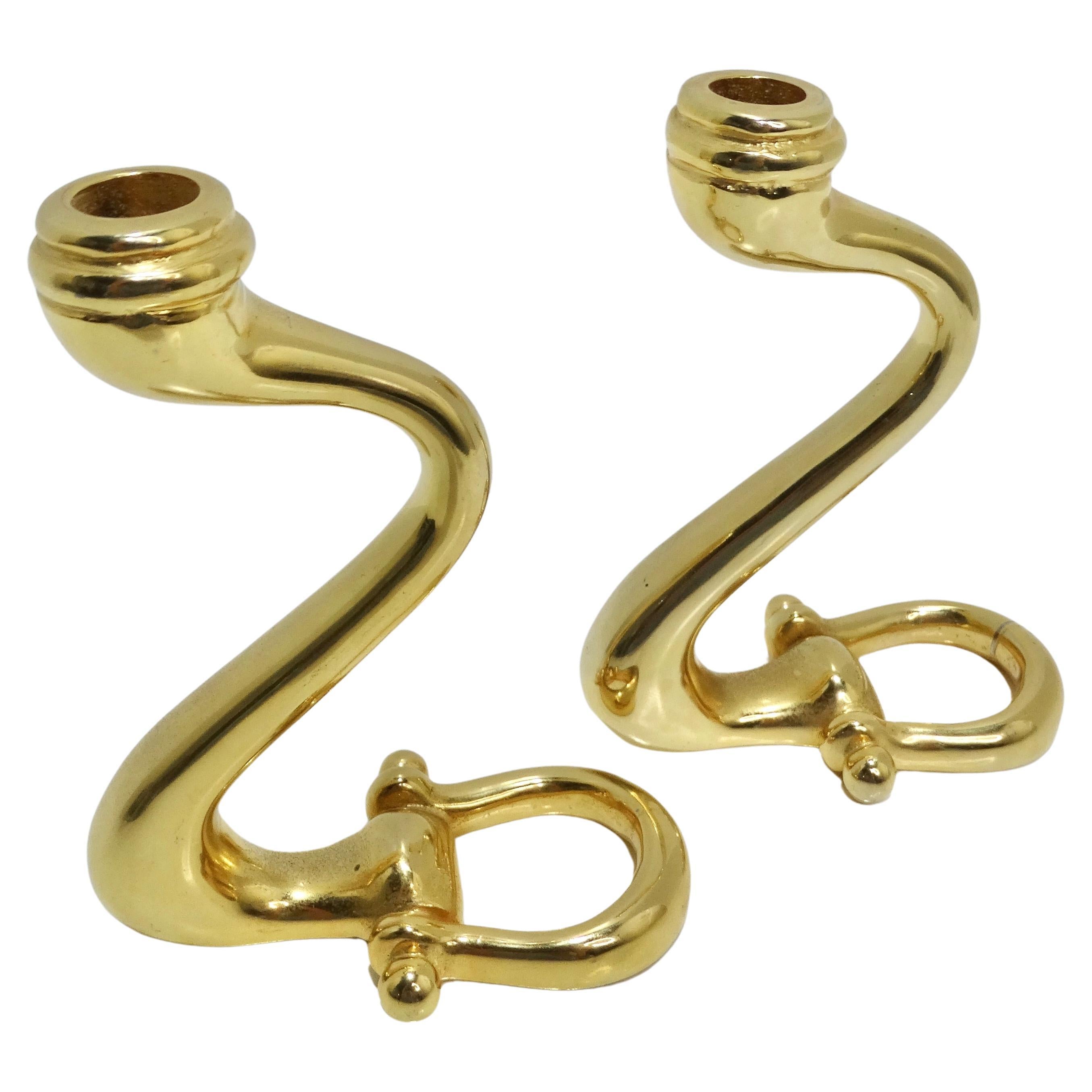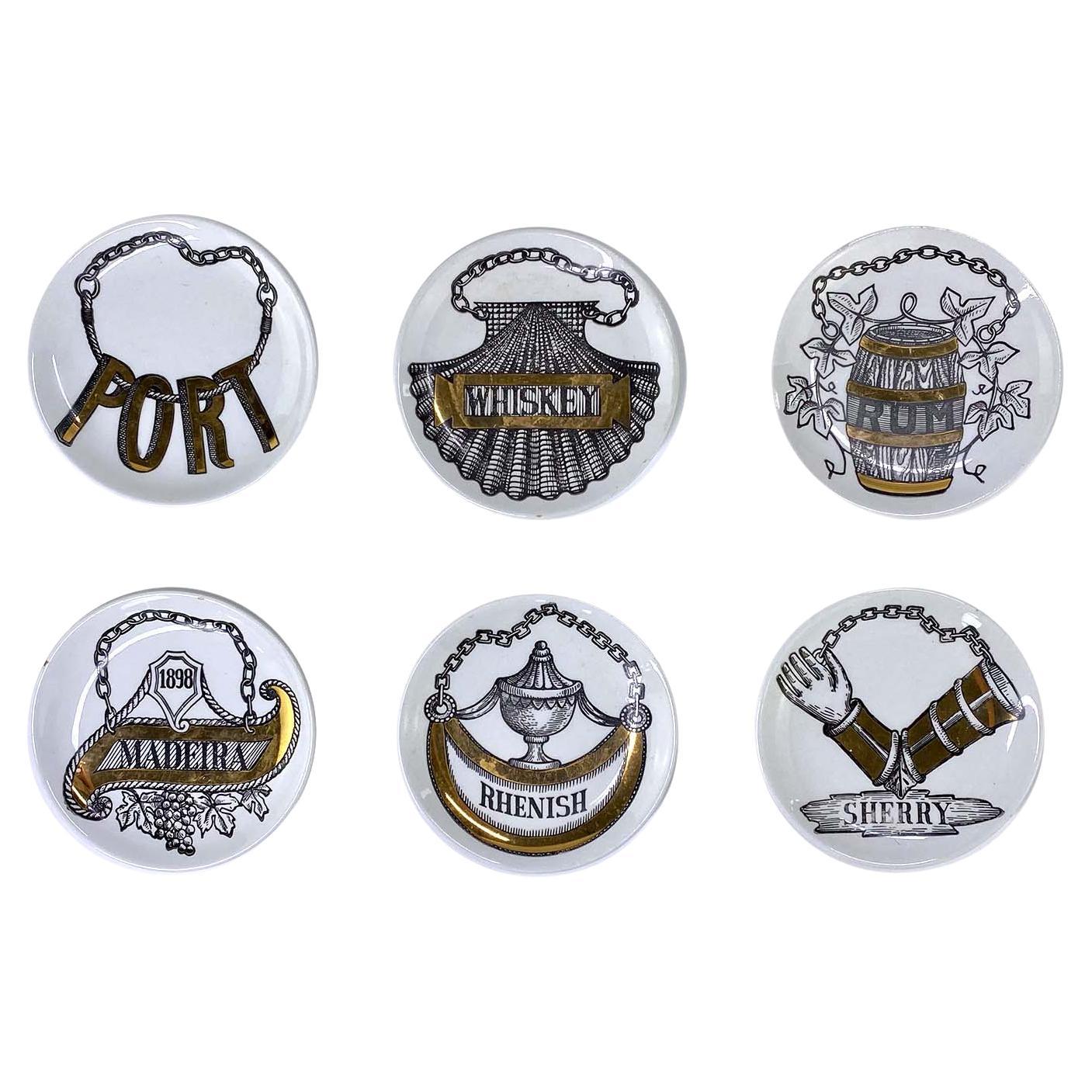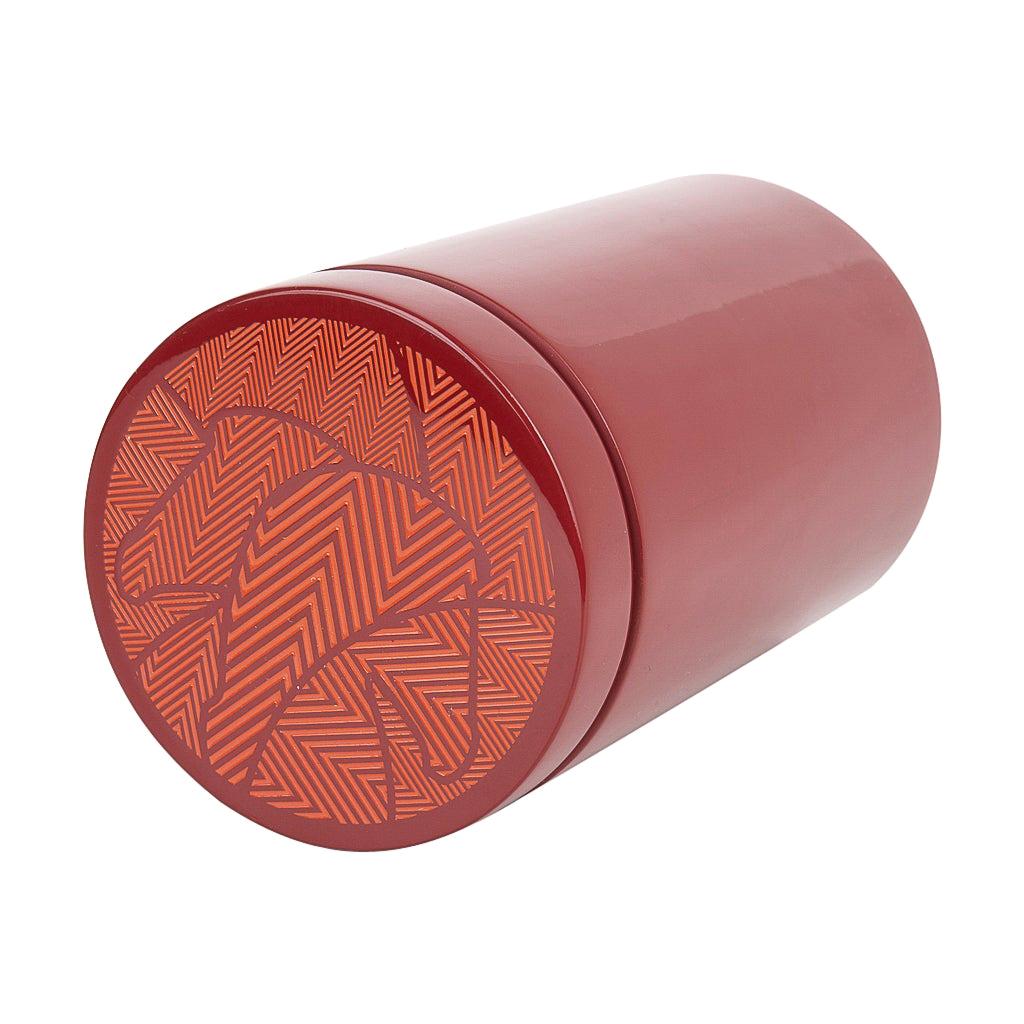Items Similar to Antique Japanese WovenSilk PaintedCeramicOjimes Beadwork Embroidery Inro
Want more images or videos?
Request additional images or videos from the seller
1 of 14
Antique Japanese WovenSilk PaintedCeramicOjimes Beadwork Embroidery Inro
About the Item
This rare antique Edo-period (1615-1868) Japanese handmade inro is a curved lozenge-shaped hand-dyed woven-silk hard carrying-case container sheath that features intricate embroidery with rock-crystal or glass beadwork and thin leather-wrapped thread appliques. For its "Kimono Style" exhibition, TheMet museum noted: "the dying, weaving, and embroidery techniques for which Japan is famed reached their peak of artistic sophistication during the Edo period."
On the burgundy finely-braided silk obijime cord that suspends the inro hang adjustable ojime fasteners of glazed earthenware, which are hand-painted with underglaze and overglaze enamels. The imagery includes signature-like branches, mountains, and a pine tree. Each knotted end of the cord dangles from the bottom of the inro with two rice-paper tubular beads.
We could not find any Japanese beads constructed from handmade rice-paper like this in any online-accessible museum collection. The long-ago artist who made this and the other handcrafted elements was an expert in multiple artistic skills beyond the typical inro maker.
In the same elongated shape of our inro, we found one with ball-shaped ojime at the V&A museum that was made in the 18th Century by Ogawa Haritsu, who was an inro master also specialized in ceramics and painting who died in 1747. The V&A noted that he had a talented apprentice, Mochizuchi Hanzan, who continued to innovate in his master's style during the rest of the century.
The only other inro among hundreds in its collection that has a painted ceramic ojime like ours is dated 1750 to 1800. The V&A noted: "ceramic inro are unusual, especially at this early date. The background of this design suggests that it imitates leather. During the late 1700s and early 1800s Dutch leather became popular in Japan and the craftsman who made this probably had knowledge of such exotic wares."
The same two embroidered designs appear on each side, whereby the top one may be an animal with a long neck or tail like a dragon, while the bottom one may be fruits, flowers or clouds.
While the threads seem hand-woven to the mostly concealed organic material, the distressed exterior is covered in grey silk, while the interior has a teal-silk rim and undyed-silk lining. On one side of the inro there is bead loss at the top. On the other side, there is leather-wrapped thread loss at the bottom.
Most inro were made for men from durable materials in rectangular shapes and multiple sections so that they could enclose small items of importance, like a seal, to a sash tied on the torso to close their kimono. Since this textile-and-ceramic one that seems to conceal a hand-carved or basketry base has such a delicate exterior, we assume it was a costly fashion accessory custom-made for a geisha's kimono with little or no function. Although, there was a match box inserted by the previous owner that we removed.
With the Japanese adoption of Western dress since the late 19th Century, inro and their makers mostly disappeared, while much of the knowledge and skills to make them were lost. Since the late Edo period the artistic value of inro increased, as they were no longer used as an accessory and came to be regarded as an art object for collection.
- Dimensions:Width: 2 in (5.08 cm)Depth: 1 in (2.54 cm)Length: 14 in (35.56 cm)
- Style:18th Century (Of the Period)
- Place of Origin:
- Period:18th Century
- Condition:Wear consistent with age and use.
- Seller Location:Chicago, IL
- Reference Number:1stDibs: LU3244220103712
About the Seller
5.0
Vetted Seller
These experienced sellers undergo a comprehensive evaluation by our team of in-house experts.
Established in 2012
1stDibs seller since 2022
9 sales on 1stDibs
Typical response time: <1 hour
- ShippingRetrieving quote...Ships From: North Adams, MA
- Return PolicyA return for this item may be initiated within 1 day of delivery.
More From This SellerView All
- Vintage EnameledSilverHeartPendants Linked AdjustableChain Decor Belt NecklaceLocated in Chicago, ILThis vintage amusing enameled silver pendant adjustable-chain unsigned necklace, belt or novel interior decoration features heart-shaped two-inch-long links painted in six colors of ...Category
Late 20th Century Decorative Objects
- Antique 1920-40 Surrealist Sculpture Unique Set Hammered SteelWire Female TorsosLocated in Chicago, ILThis antique Surrealist sculpture set of two one-of-a-kind female figurines was handmade in hammered steel wire with patina estimated as early as the 1920s. Each ribald three-dimensional self-standing torso study of a woman features either three spiral springs (suggesting pregnant belly with large breasts...Category
Early 20th Century Unknown Sculptures
- MontblancMeisterstuckClassique Germany Gilt BlackResin Rollerball Pen with InkBy MontblancLocated in Chicago, ILThe best-known writing instrument of all Montblanc collections, this Meisterstuck Classique features six gilt rings and clip on the black-resin rollerball pen with a pull-off cap, un...Category
20th Century German For The Desk
- LimitedEdition Vase AperitifGlass JeanNouvel 2002 Signed for French LiqueurSuzeBy DaumLocated in Chicago, ILAs a signed and 2002-dated limited edition, French architect and furnishings designer Jean Nouvel was commissioned to create this yellow-accented vase or aperitif glass for one of th...Category
Early 2000s French Vases
- Couture MartinMargiela 1998 WorkOnPaper & Artisanal Line0 WhiteLingerie BoxedSetBy Martin Margiella, Maison Martin MargielaLocated in Chicago, ILAs conceptual art while he transitioned to Hermes Creative Director in 1998, Belgian Martin Margiela--whose creations today debut in the setting of a contemporary-art gallery priced at upwards of EU$150,000--created this stenciled or block print. Conceived by arguably the most culturally influential contemporary fashion designer since Gabriel "Coco" Chanel, it is part of a limited-edition-of-two white-boxed set that includes the couture Maison Martin Margiela "Artisanal Line 0" body-harness lingerie in its maker's signature color white for Spring 1998. The same lingerie--one white and the other black--starred in a film made by Margiela among the five that he screened to present his Spring/Summer 1998 "Flat Collection" in Paris at the Conciergerie. In that film titled "4", which begins with a view of the iconic topless tabi "boots", the hands of Margiela's white-labcoat-clad assistants enter the frame to manipulate different garments on a model who initially wears the exterior lingerie (see our photos) as if jewelry. A simple dark collared coat, a white collared button-down shirt, and a dark button-down cardigan--all with the "displaced neckline" or "displaced shoulder" of the flat-hanging clothes--are transformed into new collarless plunging v-neck garments, which appear to be ruched when folded under the harness of the lingerie. Both black versions of the lingerie are in museum collections. In Martin Margiela's home-country, the ModeMuseum (MoMu) archived its collected piece as OBJ7660. In the 2018 Parisian retrospective exhibition at Musee de la Mode/Palais Galleria when its artistic director was Martin Margiela (working with Curator Alexandre Samson), the second black lingerie was featured on a mannequin and collected the same year by the Vogue Paris Foundation. Other conceptual designs from this same 1998 collection of jewelry were acquired by TheMet museum in Manhattan. Without the restriction of the use and function of clothing, the small uncreased print--on a card that can be removed from the interior-box bottom that it loosely spans--shows the buyer how to endlessly fashion unique tops using the structural-elastic lingerie as an undergarment for their own pre-worn button-down shirts. This is a more obvious example of the once avant-garde concept of anti-fashion upcycling that Martin Margiela introduced to challenge social and fashion-industry norms by the 1990s, which echos the revolutionary anti-art of Marcel Duchamp. Essentially, valuable art/fashion can be made from everyday vintage objects. While Duchamp did so in 1917 with a men's porcelain urinal titled "Fountain" attached to a gallery exhibition wall, they both made the point that it is the way that such items are reassembled that can make the result a progressive statement. What makes the print so special and worthy of framing for display is that, without words, the three numbered images on a single white card encapsulate the before-its-time fashion manifesto of Martin Margiela to recycle fashion in remarkable new wearable ways, such as harnessed by his unique lingerie. According to The New York Times in its 2021 feature-story that reflected on his radical fashion design and delved into his crossover art, Margiela "changed how we dressed in the 1990s", while his art embodies "the visionary man he has always been." At a turning-point shortly after Margiela designed this couture set in 1997, his personal manifesto became more difficult to accomplish in his fashion career as the new leader of France's historic luxury fashion-house Hermes, for which his first womenswear collection was presented for Autumn/Winter 1998. Frustrated by the limitations of the industrialized luxury trade and conglomerate conflicts with his closely guarded privacy, the famously "invisible" designer pre-maturely retired from the fashion industry in 2009 to independently build on his clever artistry in other mediums. Margiela continues to demonstrate what he often told his fashion teams: "The less you have, the more creative you are as a designer." This minimal finely-crafted lingerie without size or gender restriction--composed of adjustable "polya-elasthanne" straps with a clear anti-slip strip on the underside and three silver-plated metal double-rings--can be worn either as a concealed structural undergarment or as a visible jewelry-like body harness in appreciation of its meaning as a foundation for recycling fashion, pure form, and meaningful color. While the initial Maison Martin Margiela ready-to-wear brand tag until the late 1990s was a distinct corner-sewn unbranded white label accompanied by tags for origin and materials/care, the couture version for this lingerie is a single tiny white unbranded tag stitched in a line near the end of the waist strap, noting in English, "Made In France," with succinct material/care identification. The set's original white unbranded box and its white black-typed couture-identification sticker complete the "invisible-brand" aesthetic. We interpret the black-type codes on the aged box-sticker (“E98 ST HAUT; Struct Elas Blanc; 02; TU"): Spring 1998 Haute Couture; white structural-elastic garment; Artisanal Line 0 edition of two; one size only. The print, lingerie and box are in very good condition as shown in the photos with only one mark on the rear edge of the exterior box-lid. Although initially tried on by the sole owner to realize a restructured shirt, the lingerie body-harness was never worn. It was collected in Belgium at the Brussels boutique where Martin Margiela initially sold his brand with his founding business-partner Jenny Meirens since 1988. Prior, Margiela worked for several years as a fashion-design assistant to Parisian Jean Paul Gaultier. Both designers have since received independent museum retrospectives internationally--from Paris' Grand Palais and Musee Palais Galliera (The City of Paris Fashion Museum) to NYC's The Brooklyn Museum and Antwerp's MoMu. While others continue to try, Martin Margiela (b.1957) is the only leading fashion designer to have made a full-time transition to the commercial contemporary-art world with such highly valued works. As a rare revealing piece of both fashion and art history, the increasing value of this Maison Martin Margiela 1997...Category
1990s French Sculptures
- Carder Steuben Rare BlownGlass "MossAgate" Numbered Blue Matrix Crackle VaseBy Steuben GlassLocated in Chicago, ILAntique colorful Steuben blown glass pieces featuring the "Moss Agate" technique designed by its co-founding artistic director Frederick Carder are unsigned and "all rare" according ...Category
1920s American Vases
You May Also Like
- Gucci 1980s Brass Horse Bit Candle HoldersBy GucciLocated in Scottsdale, AZIntroducing the Gucci 1980s Brass Horse Bit Candle Holders, a captivating and luxurious addition to your home decor collection. Crafted from brass with a rich gold-tone finish, these candle holders exude elegance and sophistication. The candle holders feature a whimsical abstract shape that adds a touch of artistic flair to any space. At the base of each holder, you'll find the iconic Gucci horse bit motifs, which are intricately detailed and serve as a nod to the brand's heritage and craftsmanship. These stunning candle holders provide a unique and stylish way to elevate your home decor and add a touch of luxury to any room. Whether displayed on a dining table, mantelpiece, or sideboard, they are sure to spark conversation and admiration from guests. Enhance the ambiance of your home with the timeless elegance of the Gucci 1980s Brass Horse Bit Candle Holders, and infuse your space with the iconic style and sophistication of the Gucci brand. Pair this next to an Hermes ash tray...Category
1980s Italian Decorative Objects
- Fornasetti Liquor Themed Six Piece 3" Coaster Set - 'Vini e Liquori'By FornasettiLocated in West Hollywood, CAPresenting a set of 1970s Pierro Fornasetti liquor-themed coasters. These coasters perfectly play into Fornasetti's design style as he takes the ordinary and adds a playful, surreal ...Category
1970s Italian Ceramics
- DE SELA Mexican Folk Art Papier Mache HeadsLocated in Atlanta, GATwo heads are better than one! Adorable pair of Mexican folk art papier mache heads by De Sela depicting a glamorous woman and her dapper gentleman. The woman sports a blonde hairdo ...Category
1960s Mexican Decorative Objects
- Hermes Cavales Lacquered Twilly Box Rouge H New w/ BoxBy HermèsLocated in Miami, FLGuaranteed authentic Hermes Cavales Silk Twilly Box. Engraved hand-lacquered wood. Exquisite in Rouge H. Fits 5 twillies or use it to keep your mementos...Category
21st Century and Contemporary French Decorative Objects
- Hermes Cavales Lacquered Box Rouge H New w/ BoxBy HermèsLocated in Miami, FLGuaranteed authentic Hermes Cavales box. Engraved hand-lacquered wood. Exquisite in Rouge H. Fits 2 twillies or use it to keep your mementos in secret! ...Category
21st Century and Contemporary French Decorative Objects
- Lalique Glass Fish Sculpture LampBy LaliqueLocated in Palm Beach, FLAuthentic Lalique Glass Fish Sculpture Lamp, made in France. Enhance a beachfront home, delight a fishing enthusiast, or treat your favorite Pis...Category
21st Century and Contemporary Decorative Objects
Recently Viewed
View AllMore Ways To Browse
Japanese Silk Embroidery
Antique Japanese Dress
Antique Early 1700s
Antique Small Leather Box
Antique Japanese Kimono
18th Century Container
Japanese 19th Century Flower Painting
19th Japan Silk Paint
Antique Enamel Animal
Antique Tie Box
Antique Beadwork
Edo Kimono
Antique Geisha
Antique Thread Box
Antiques Torso
Antique Teal Paint
Dior Dragon
Dior Dress Long





